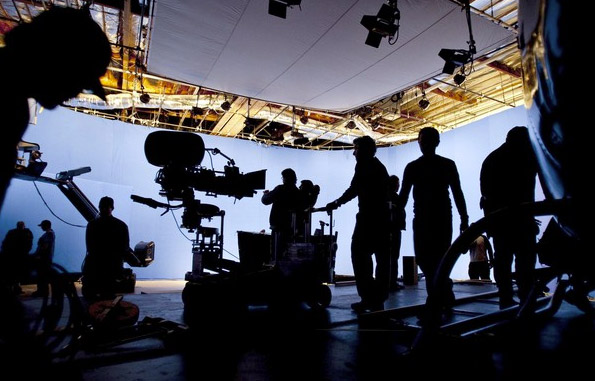Whether they are a financial godsend or a revenue burden to states, all agree that film and television production is booming due to film incentives and tax credits. The challenge for any producer is to stay up to date as incentives are in a constant state of flux… or disappear entirely. Here’s the latest on some of the notable state film and television incentives.
California: 3.0, Here We Come
California is about to have a slew of new changes to its production incentive offerings, with the Film & TV Tax Credit Program 2.0 ending in June 2020 and Program 3.0 launching in July. The Golden State will get $330 million to go into their incentives pot. Finally, independent projects with budgets under $10 million will have their own basket of credits to pull from. This is a major development, as the current program has large and small independents competing for the same film incentive funds, sometimes to the detriment of the smaller ones.
California will also roll out a new career-based training program as well as having a new requirements showing efforts to hire more women and minorities on productions. Production must also sign a pledge condemning any sexual harassment on the job.
The state will additionally have a brand-new incentives bonus for areas outside Los Angeles. This has become a trend happening in more and more states. It helps spread production through a state and create good faith for legislators whose districts lie outside a production area. Look for The Golden State to see an increase in independent production next year, due to these filming incentives enhancements.
Georgia: Winds of Change
Georgia’s generous tax credits have sparked a billion-dollar production boom but there are signs that might change. State Republicans are looking at reducing film production credits — the largest pot of tax incentives offered by the state — as a way of avoiding some of the serious cuts to a $27 billion state budget ordered by Governor Brian Kemp.
While Georgia’s incentive program is not the richest in the land, their tax credit system has no cap and is easy to apply for. All you have to do is slap on the peach logo! If that were to change, Georgia’s status as a film hub would be in doubt. Keep an eye on the upcoming legislative fight over incentives.
Illinois: On ‘Chicago Fire’
In an effort to attract more film industry jobs and spending, Governor J.B. Pritzker signed legislation last year extending film tax credits through 2026. The incentives, which give companies 30% tax credits on production costs and salaries, were set to expire in 2021. It’s good news for a state that needs good news after so much bad publicity. Studios look at every dollar spent and as Dick Wolf, creator of Chicago Fire, Chicago P.D. and Chicago Med had told the governor earlier this year that “if the tax credit goes, we have to go.”
Louisiana: Blue Bayou
Louisiana continues to be a tempting destination for film and TV producers and the state’s 25% – 40% tax credit, which is partially refundable, usually seals the deal. However, much like Georgia incentives are getting a push back in certain circles. A study last year shows that taxpayers are losing roughly two-thirds of the money they put into the state’s film tax credit program. With repeated budget shortfalls and cut spending in areas like health care and education, the Louisiana legislature could turn its attention to “Hollywood on the Bayou” for answers.
New York: Start Spreading the News
New York recently had some welcome news for branded content specialists as in 2020, they will allow for online commercials to qualify for the New York Commercial production incentive. This forward-thinking expansion will broaden the New York incentive outside the traditional broadcast commercials they currently cover. New York also made a slight change for tax credit programs which affects the overall credit allocation. Any New York credits dispersed in 2020 will have a .025% reduction applied to them that will in turn cover diversity job training in the state.
Montana: Incentives Are Back in Big Sky Country
Montana’s production incentive came roaring back earlier this year. The state resurrected a transferable film tax credit that provides a tax credit for 20% of production costs for projects shot in Montana. A trifecta of bonuses can bring that film credit up to 30% and even higher. They have a low minimum spend of only $50,000 and $5 million in the incentives tank, ready to go for productions in the area.
Mississippi: Re-Incentivizes Non-Resident Labor for Productions
Mississippi had become one of the forgotten states for production in the last two years since their production incentives program stopped qualifying non-residents working in the state. However, in April of 2019, they brought that element of the incentive program back, allowing non-resident payroll to be considered as part of base investment and eligible for a 25% rebate. Expect production to increase in the state as a result.
New Mexico: BACK ON TOP with Latest Incentives
As one of the first states in the U.S. to offer production tax incentives, New Mexico continues to lead by example. As it stands now, New Mexico offers 25% in a refundable credit on any qualified-spend items purchased through New Mexico vendors, as well as any New Mexico resident wages.
The 25% tax incentive is also applicable to nonresident talent, given certain criteria are met. Best of all, New Mexico does not have a minimum spend, which makes it even more attractive to independent productions. The funding cap also doubled, from $55 million to $110 million.
The new version of the tax incentive retains the 5% TV bonus. So as long as a show has at least six episodes and spends $50,000 per episode in the state, producers can realize a combined return of 30% in refundable tax credits. Veteran shows like Better Call Saul and Longmire continue to take advantage of this offering. Pilots may be able to capitalize on the TV bonus incentive as well.
OTHER STATE Film Incentives Get Fund Increases
Pennsylvania received $5 million increase to their already impressive $65 million funding pool. Hawaii managed a massive 43% increase to their $35 million cap, ending at $50 million and with hopes for more next year. Rhode Island also received a $5 million bump to their $15 million pot. Illinois has extended their program to 2026, Arkansas extends theirs to 2029, and Ohio continues to fund its program.
Colorado’s production incentive recently received a much-needed boost to its film funding program, adding $1.25 million to the pot. They now have a $2 million dollar funding cap on a solid rebate program. Applicants can still get 20% on all labor and spending incurred in the state. They hope the bump will bring some new shows to the area and give rise to an even larger increase in funding next year.
Making Their Way Back
North Carolina and Florida are working hard currently to bring work back to their filming communities with help from their production incentives. We look forward to tracking their progress in 2020 and beyond.


